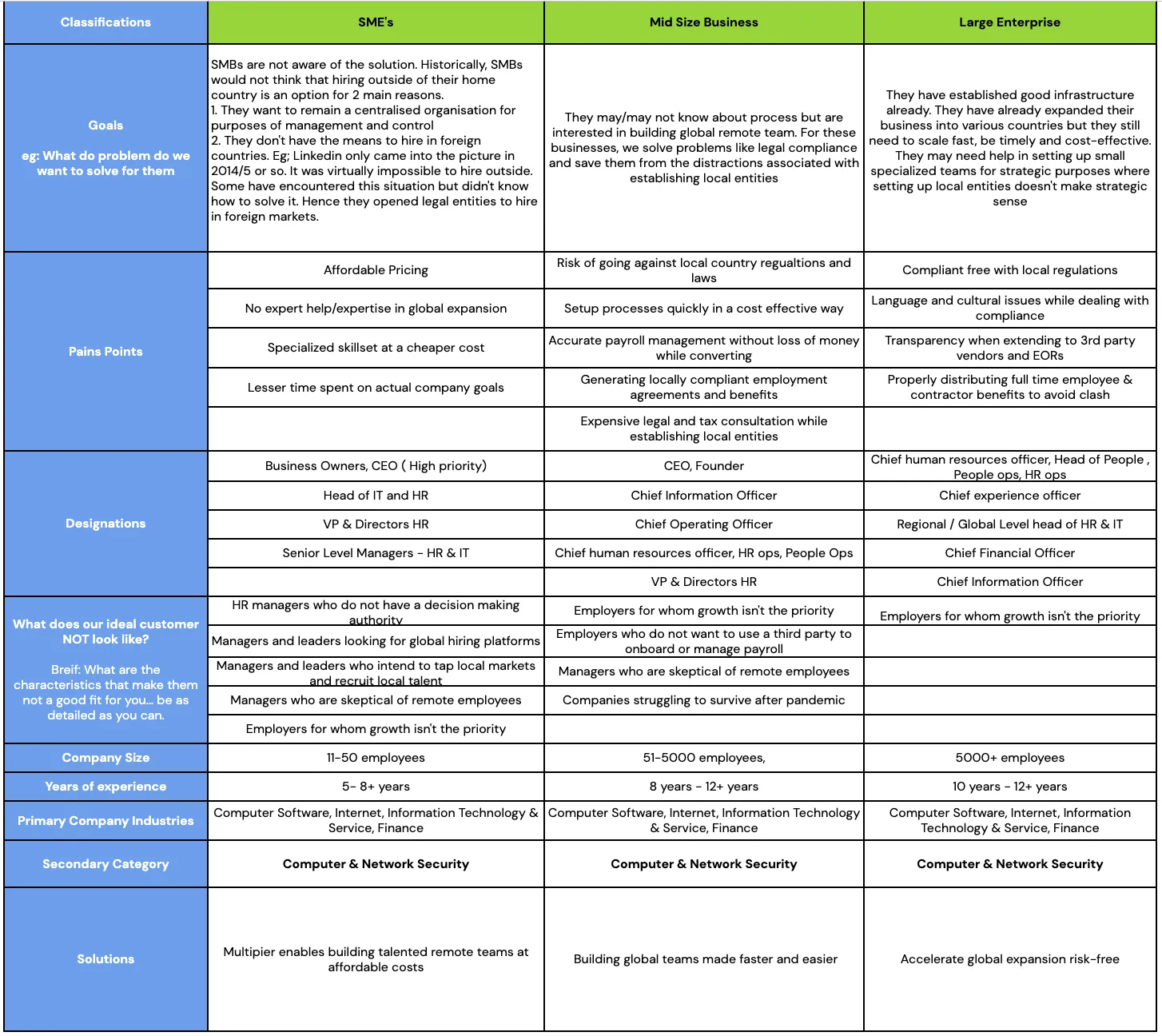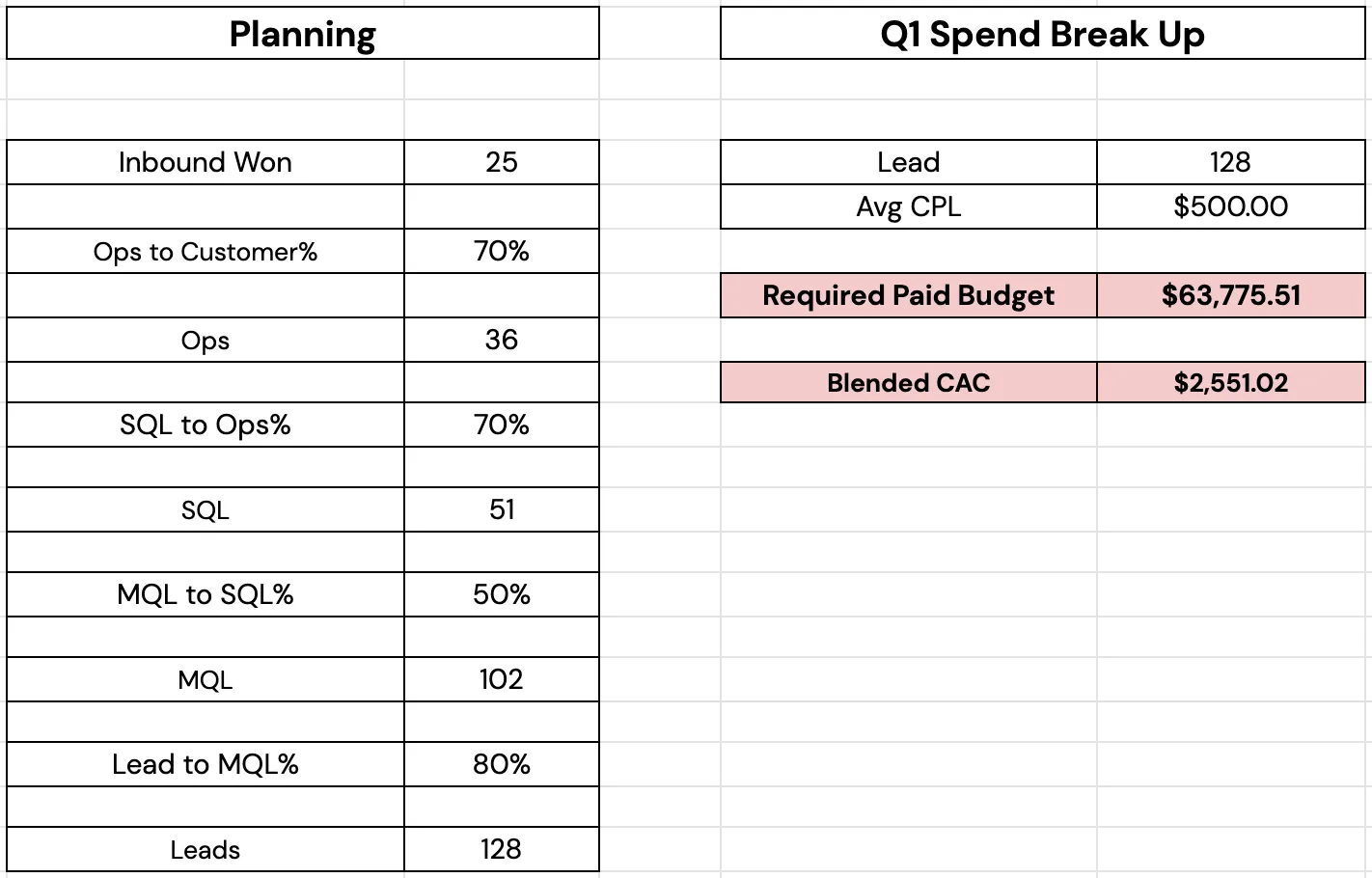So, what is an ICP in business? Let's start with a metaphor.
An ICP is a detailed description of the companies you want to target, giving you a better understanding of the accounts and people you should focus on.
For B2B businesses, your ideal customer profile is a business (not a person) with the problem you solve and who is most likely to buy your product.
This is a fancy word for a buyer persona.
Not quite.
While the two sound similar, there is a key difference.
Your buyer persona refers to the person making the final purchasing decision at the company (your ICP).
However, before you can create an ICP, we need to dive deeper into the differences between the target audience, potential customers, and your ideal customer profile.
We should classify which type of business will be suitable for targeting, like startups, SMBs (Small, mid-size companies), Mid-market Businesses, and Large Enterprises.
We have to write in-depth about what sort of goals we focus on and the different types of businesses we are concentrated on.
Hint: Startups & SMBs need to be made aware of the solution. Historically, SMBs would not think that hiring outside of their home country is an option for two main reasons.
We have to list down pain points that we should be able to highlight on our copies and landing pages to improve customer acquisition strategy.
Hint:
We should be able to focus on job titles & senioritis based on different classifications.
Hint:
For Startups
Brief: What characteristics make them not a good fit for you? Be as detailed as you can.
Hint:
For Startups
Hint:
Starts ups: 11-50 employees
Mid-market: 51-5000 employees,
Enterprise: 5000+ employees
Hint:
Starts ups: 5- 8+ years
Mid-market: 8 years - 12+ years
Enterprise: 10 years - 12+ years
Hint:
Computer Software, Internet, Information Technology & Services, Finance
Hint:
Computer & Network Security
We should work highly on messaging suitable for each business that needs to convert into different angles to all our copies, landing page content, and sales enablement materials.
Hint:
For Startups
Also, While we work on ICPs, we must create this Glossary of Verbiage, Jargon, and Niche-Specific Terms or Language to focus our target audience groups tightly.
You can also use this ICP template & start preparing immediately.

Search strategy is an effective way to drive qualified traffic, or good-fit customers, to your business by searching for products and services like the ones you offer. Also, Google ads allow you to create and share well-timed ads (via mobile and desktop) among your target audience. As a result, your business will appear on the Absolute top of the page when your ICPs are looking for products and services.
Keep going if you've tried unsuccessfully to advertise on Google. There are many reasons why your Google Ads could be underperforming. But first, let's cover some standard Google Ads best practices.
Your advertising revenue doesn’t come from your products or services. But, of course, that doesn’t mean your product is not essential.
However, an essential factor that makes a paid advertising campaign successful is the keywords you choose to bid on. Keywords make or break a PPC campaign, as this element determines who sees your ad and who can’t.
Here are keyword structure we followed for Client:Multiplier:
Also did extensive keyword research using Google,
While preparing the campaign at the beginning, you have to know your SaaS metrics based on expectations on spending & conversion data. It will help us to create data-driven forecast planning.

Then plan which regions you're planning to target like:
And based on keyword research on the below categories

Combining the keyword category research & GEO split up to get volume using a keyword planner to do bottom-up planning to see whether we are close to our planned numbers.

You have a lot to consider when structuring a search campaign, and Google Ads is a diverse, expansive platform that can take many years to master.
You can simplify your data analysis processes by creating a Google Ads campaign structure, multiple ad groups, and structuring your account to leverage segmentation. Whether it’s branded vs. non-branded terms, device, or location targeting, it’s clear that PPC campaign managers can break their campaign down into a vast array of sections. Whichever way you decide to go for a search campaign structure with multiple ad groups, you’ll find it easier to get the insights you need to succeed.
4 things to make sure you’re performing well on Google ads campaign in 2025
Book a slot with TripleDart’s expert SaaS PPC agency today and scale your Google Ads campaigns successfully.
Join 70+ successful B2B SaaS companies on the path to achieving T2D3 with our SaaS marketing services.


































.avif)